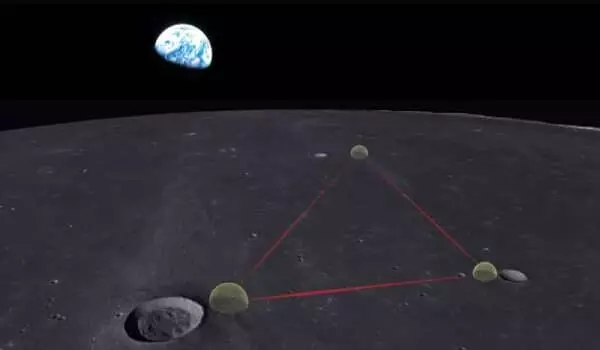When Albert Einstein proposed that there are ripples in the fabric of spacetime in 1915, he had barely scratched the surface of a phenomenon that would revolutionize physics. Approximately 100 years later, Einstein’s successors discovered the first ripples, known as gravitational waves, arriving at Earth from a cataclysmic event in the distant universe. The discovery opened up a previously unseen new window into the cosmos.
The gravitational wave detections are made using the twin Laser Interferometer Gravitational-wave Observatory (LIGO) observatories in Louisiana and Washington. Now, an Indian-born physicist wants to go beyond the current facilities and build such an observatory 3,80,000 kilometers away from Earth – on the Moon.
Astronomers are investigating the feasibility of establishing a lunar observatory in order to better understand fundamental physics, astronomy, and cosmology. Karan Jani, an astrophysicist at Vanderbilt University, has led a series of studies that make the first case for gravitational wave infrastructure on the moon’s surface. The Gravitational-Wave Lunar Observatory for Cosmology uses the moon’s environment and geocentric orbit to analyze mergers of black holes, neutron stars, and dark matter candidates within nearly 70% of the universe’s total observable volume, he said.
A lunar observatory can measure a spectrum of gravitational waves that no ongoing or planned experiment on Earth (such as LIGO) or space mission can find for several decades. By taking advantage of the natural conditions on the moon, we demonstrated that one of the most difficult spectrums of gravitational waves can be measured better from the lunar surface, which previously appeared impossible from Earth or space.
Dr. Karan Jani
“By taking advantage of the natural conditions on the moon, we demonstrated that one of the most difficult spectrums of gravitational waves can be measured better from the lunar surface, which previously appeared impossible from Earth or space,” Jani explained.
“Because it lacks an atmosphere and noticeable seismic noise, which we must mitigate at great cost for laser interferometers on Earth,” said Avi Loeb, a Harvard University professor of science and bestselling author of books about black holes, the first stars, the search for extraterrestrial life, and the future of the universe. “A lunar observatory would provide unprecedented sensitivity for discovering previously unknown sources, potentially informing us of new physics. GLOC could be the crowning achievement of science on the moon’s surface.”

This work comes at a time when NASA is reviving its Artemis program, which aims to send the first woman and the next man to the moon as early as 2024. Ongoing commercial work by aerospace companies such as SpaceX and BlueOrigin has also contributed to the momentum behind plans for ambitious scientific infrastructure on the moon’s surface.
“We hope to develop a pathfinder mission on the moon in the coming years to test the GLOC technologies,” Jani said. “Unlike short-term space missions, the great investment benefit of GLOC is that it establishes a permanent base on the moon from which we can study the universe for generations, if not the entire century.” The observatory is currently theoretical, with Jani and Loeb receiving strong support from the international gravitational-wave community.
“It was an honor to work with an innovative young thinker like Karan Jani,” Loeb said. “He might live long enough to see the project through.”
Gravitational waves are space-time ripples that carry information about their dramatic origins and the nature of gravity that cannot be obtained otherwise. Einstein predicted that when two bodies, such as planets or stars, orbit each other, something unusual happens. This type of movement, he believed, could cause ripples in space. These waves move at the speed of light, squeezing and stretching everything in their path. When a star explodes asymmetrically, known as a supernova, the most powerful gravitational waves are produced.
The lunar observatory will detect gravitational waves from the Moon using the same principles as Earth’s gravitational wave detectors. It will use the moon’s environment and geocentric orbit to study the mergers of black holes, neutron stars, and the most elusive dark matter candidates within nearly 70% of the universe’s total observable volume.
“A lunar observatory can measure a spectrum of gravitational waves that no ongoing or planned experiment on Earth (such as LIGO) or space mission can find for several decades,” Dr. Karan Jani explained via email.





